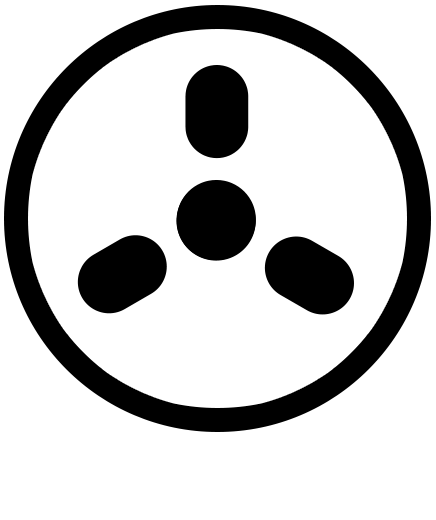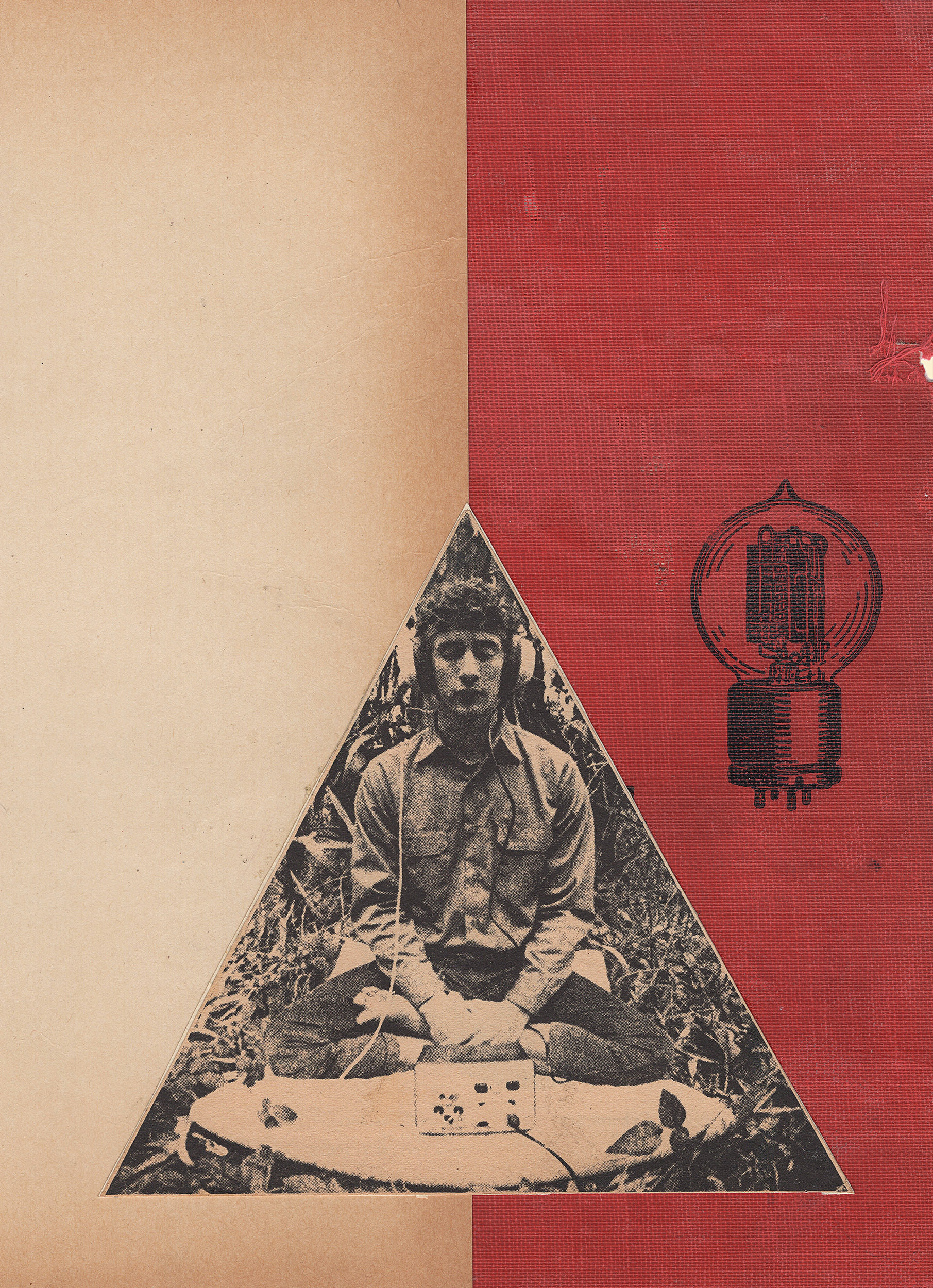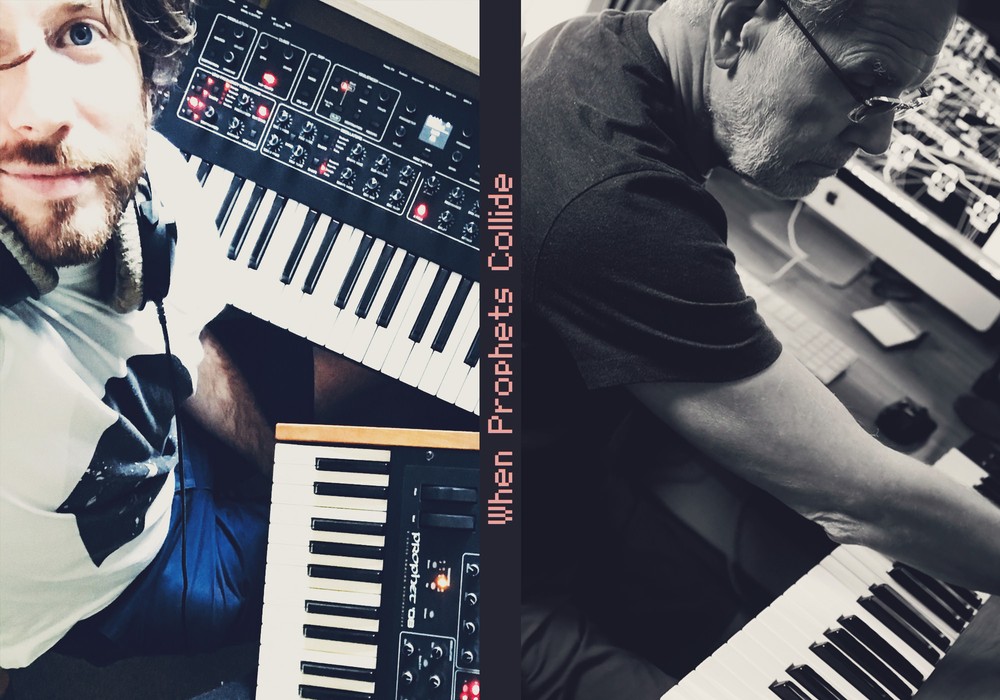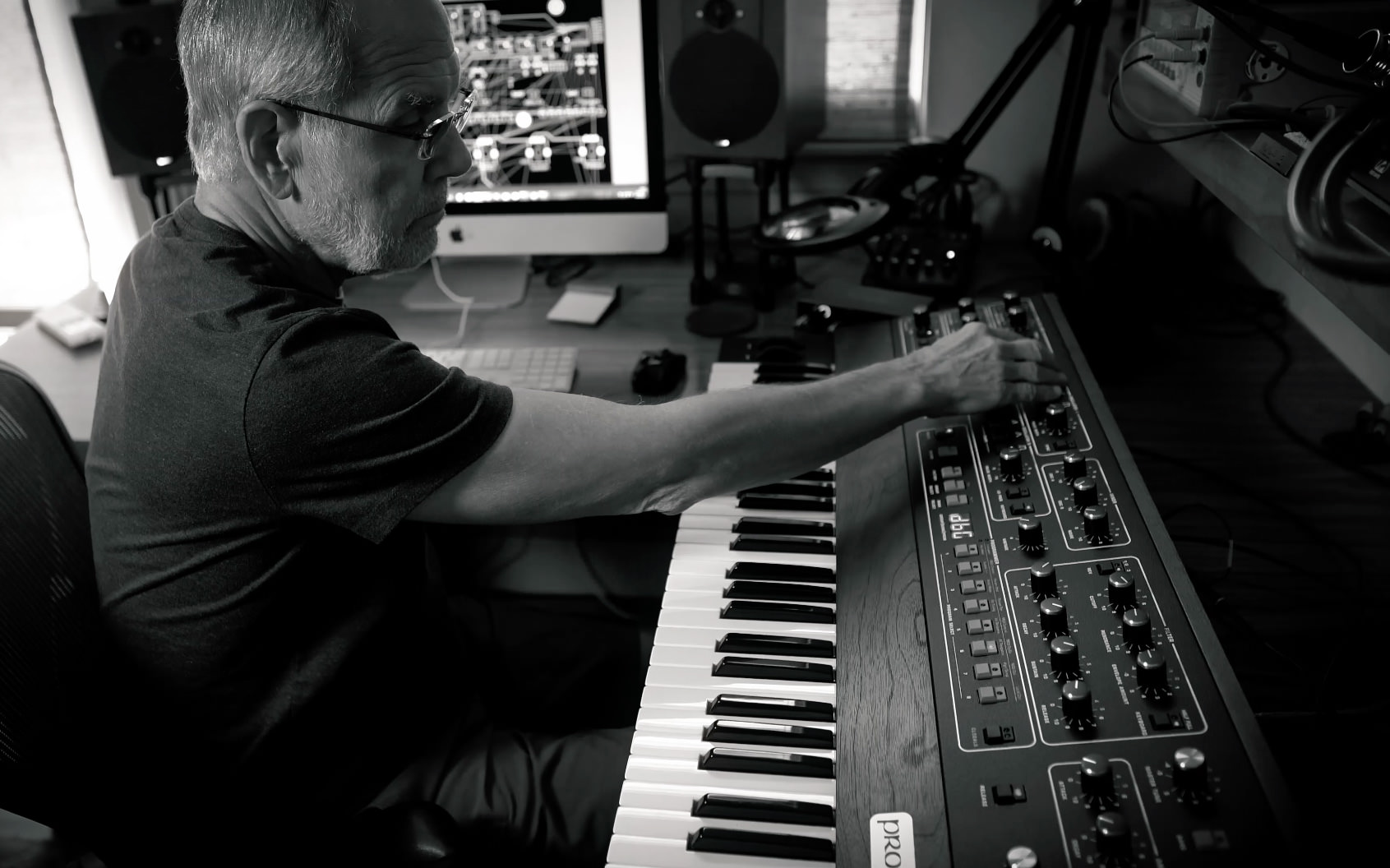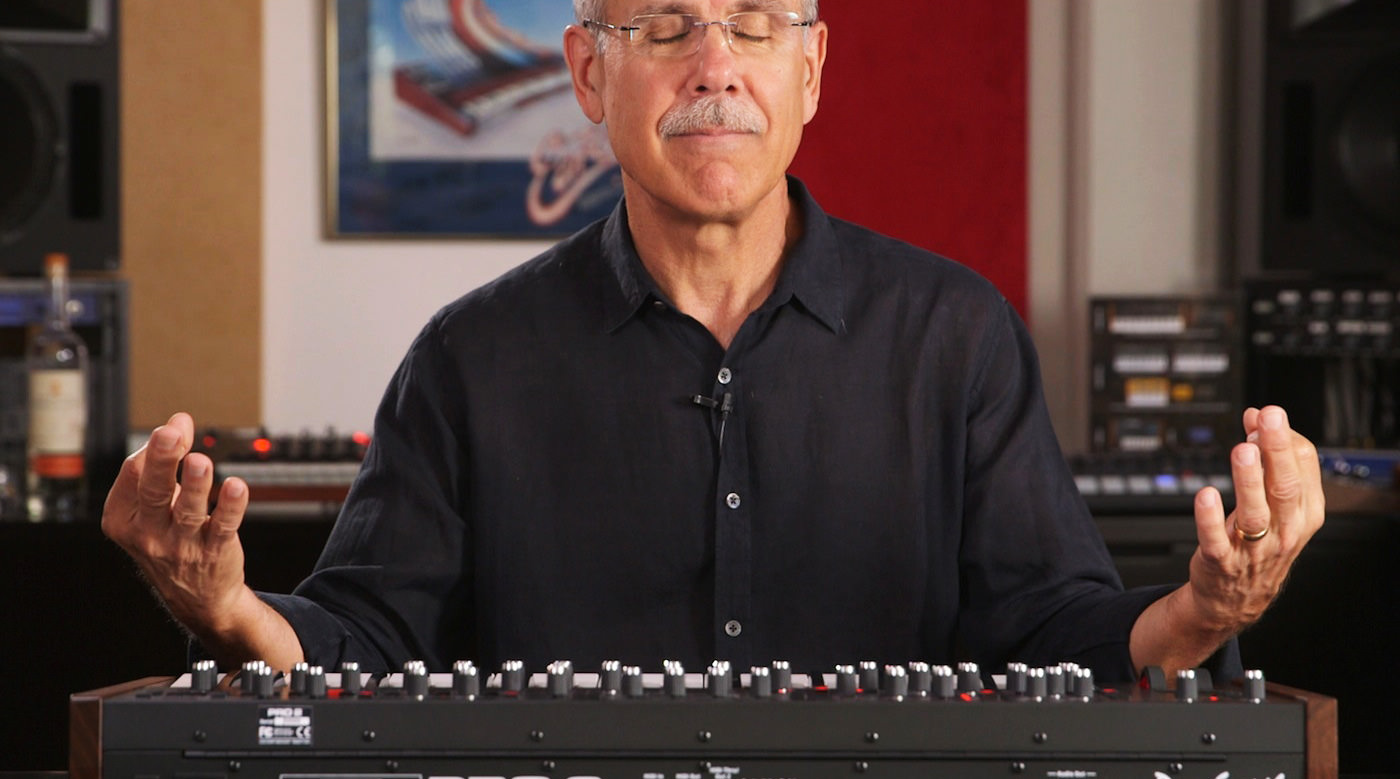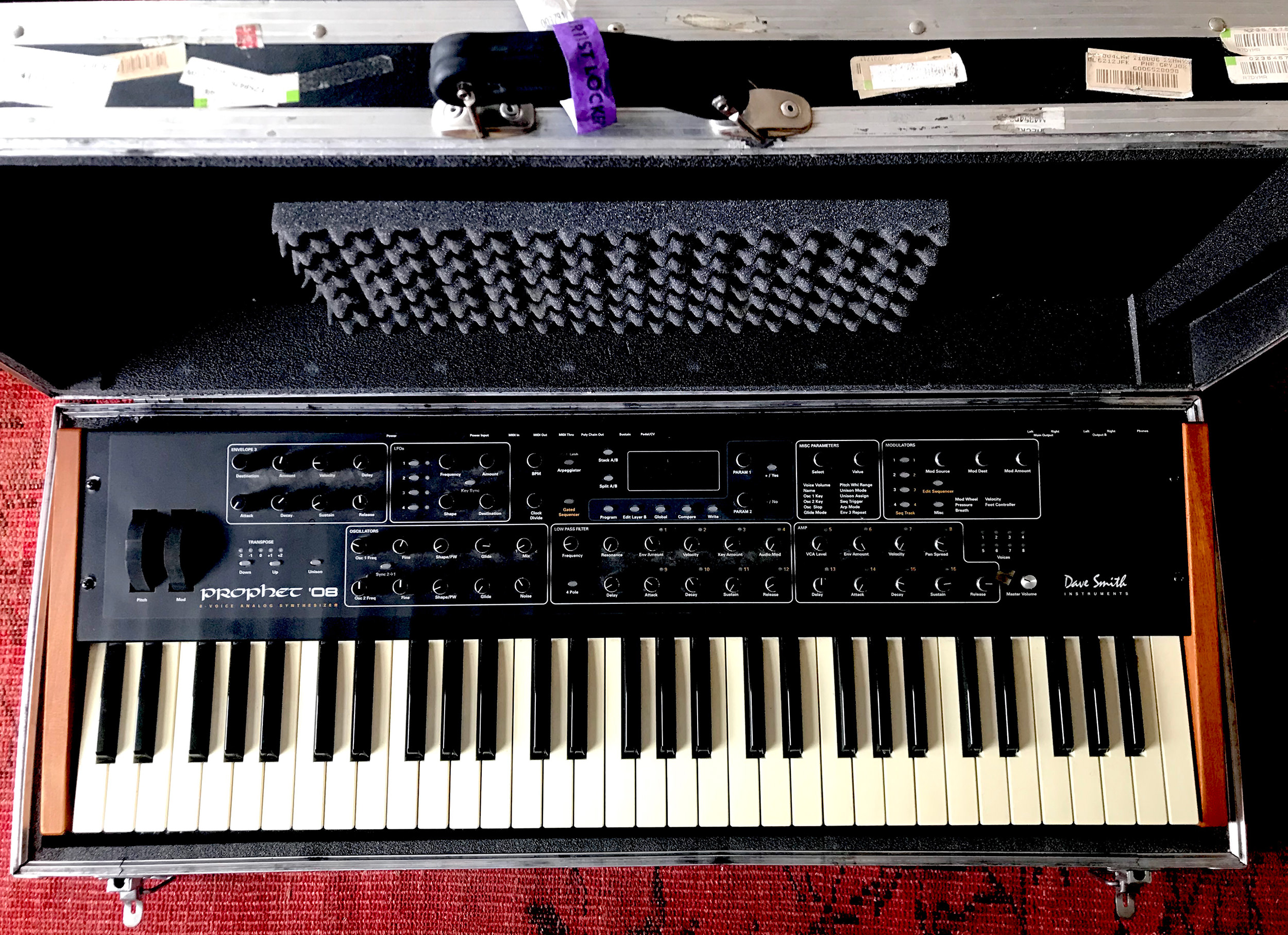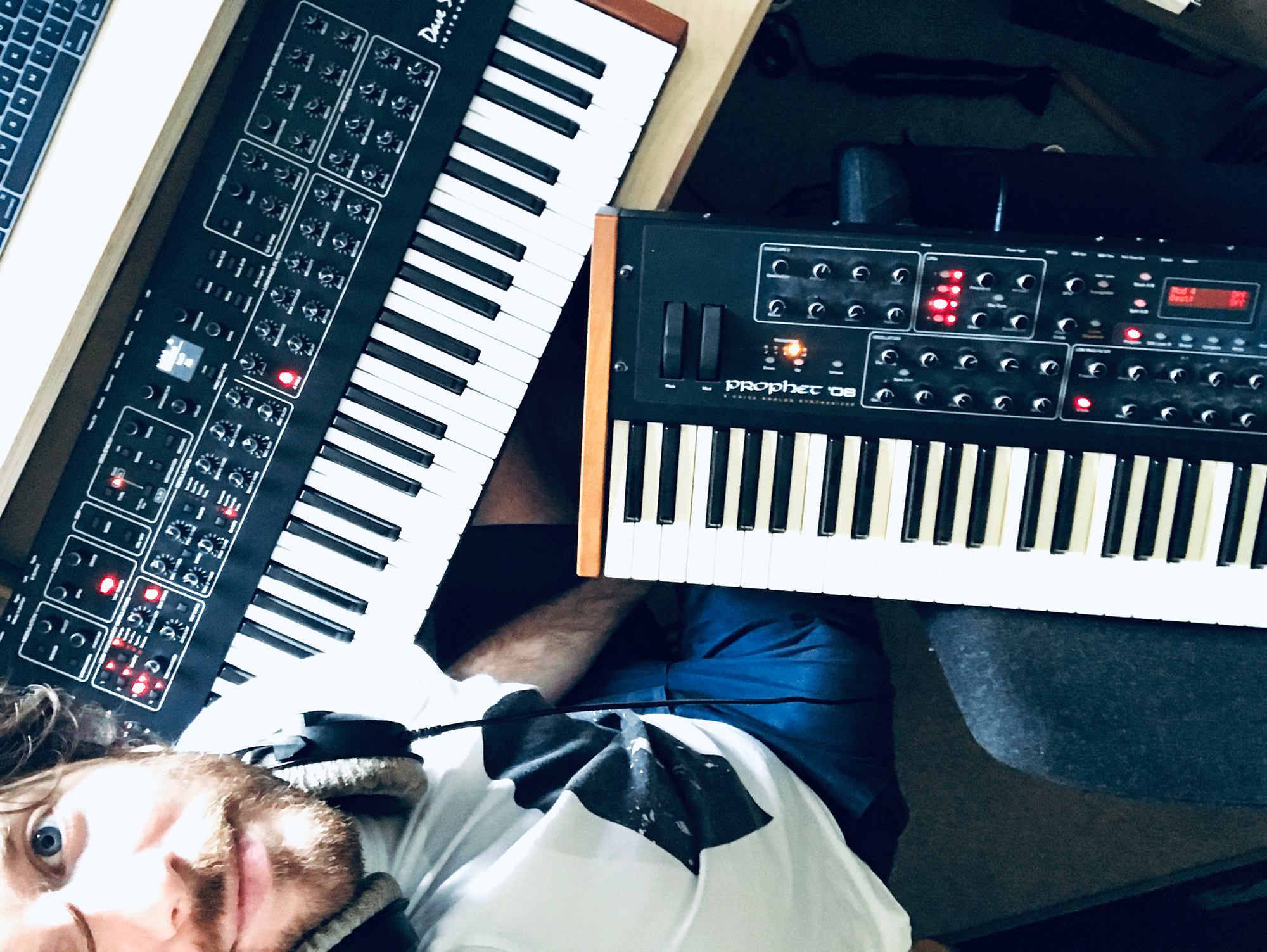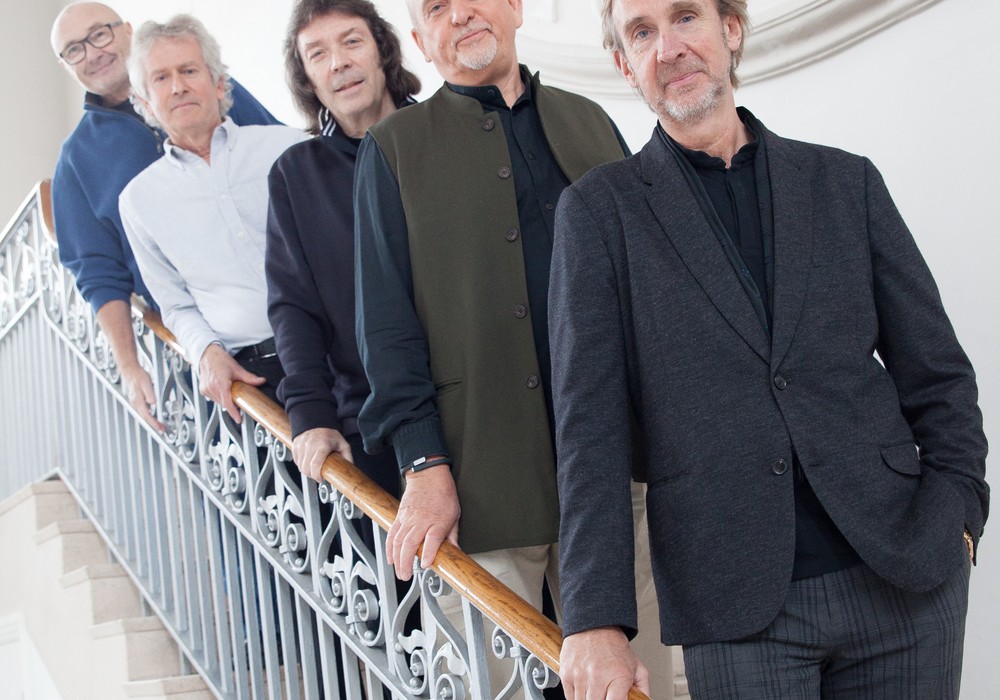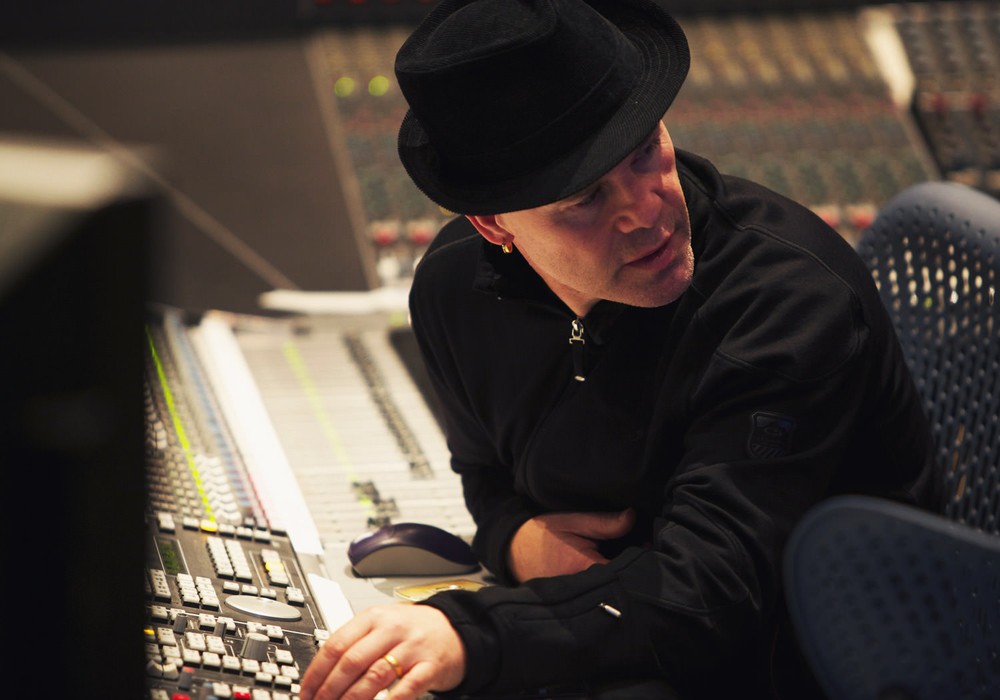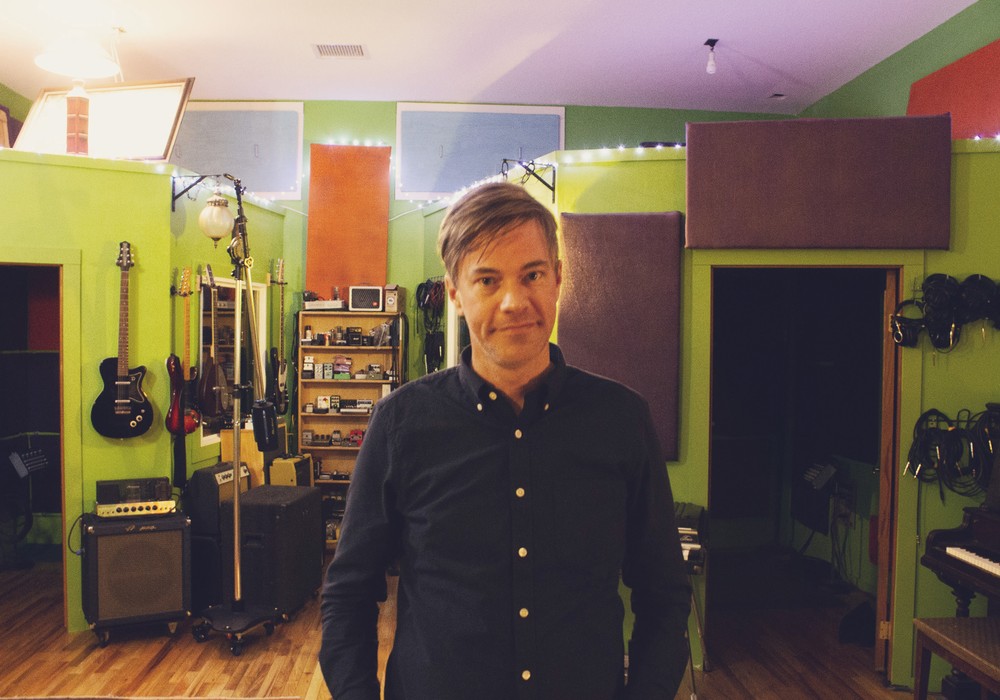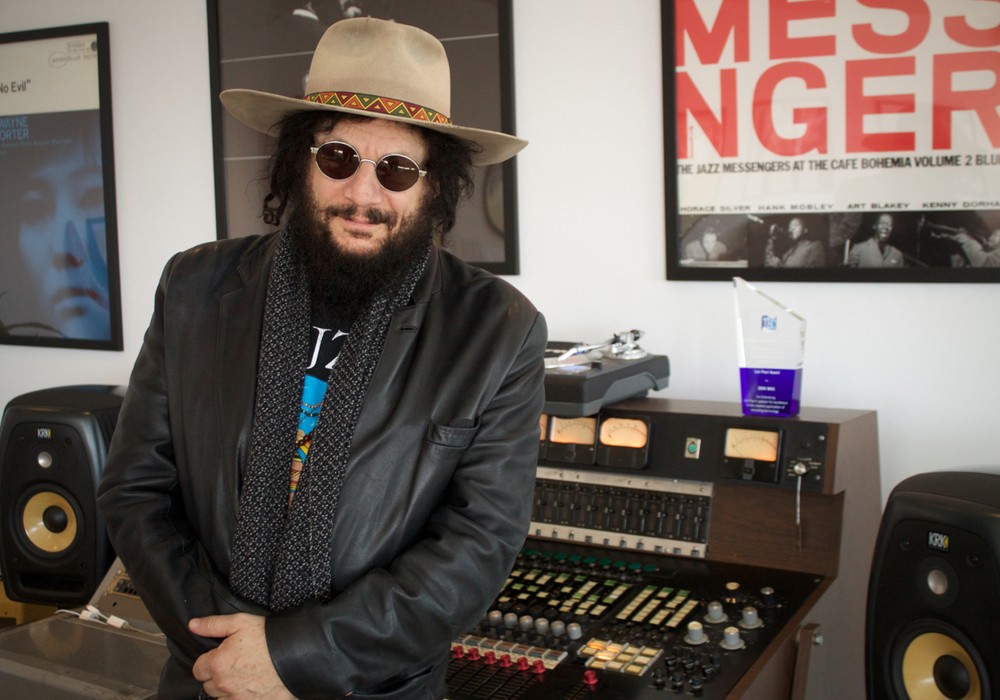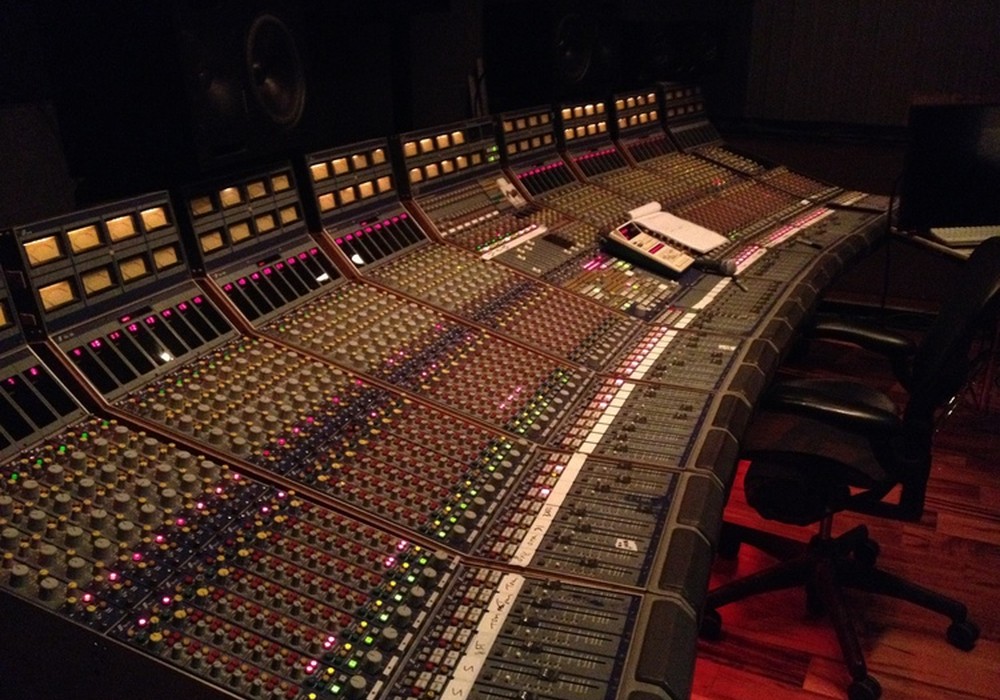When Dave Smith founded Sequential Circuits in 1974, he could not have imagined his synthesizer creations would remain staples of the electronic music-making scene 46 years later. The company folded in 1987 due to the arrival of digital synths, themselves eventually superseded by software synths. However, Sequential was reborn in 2002 – initially as Dave Smith Instruments – and would soon mark its arrival with the 8-voice analogue Prophet ‘08 synthesizer. One such user is Ryan Lee West, aka Rival Consoles, who spent two years investigating the machine before his career justified the expense of purchasing one. It was a good decision, as the Prophet ‘08 has become integral to West’s production process and has since been featured on all of his records since 2013, including his latest album release Articulation – out now on Erased Tapes. The two briefly crossed paths at Smith’s San Francisco workshop when West’s Prophet ‘08 got damaged during transit on tour, and they’ve kept in touch ever since. With Smith curious about West’s approach to using his instrument and West fascinated by Smith’s approach to synth building, Tape Op got the instrument maker and instrument user together for an in-depth chat.
How did you both get into music?
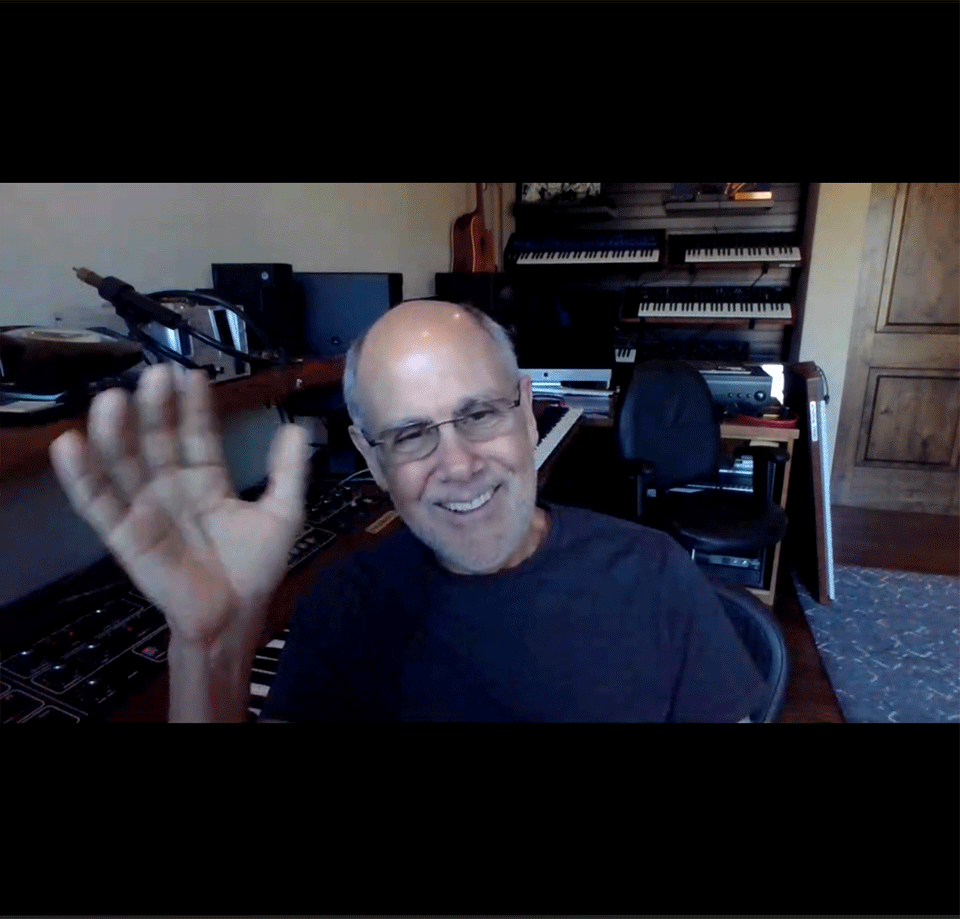
Dave Smith: I had a music background from playing piano at home and in bands at college, but I also had a degree in computer science and electrical engineering from the University of California. When synthesizers first came out, I saw a [Moog] Minimoog in a little store and it immediately appealed to me. I had no idea what it did; I simply saw a keyboard and a bunch of knobs and knew I had to have it. My passions are music and technology, and synthesizers in the early ‘70s were new and exciting. Fifty years later, I’m still enjoying it just as much.
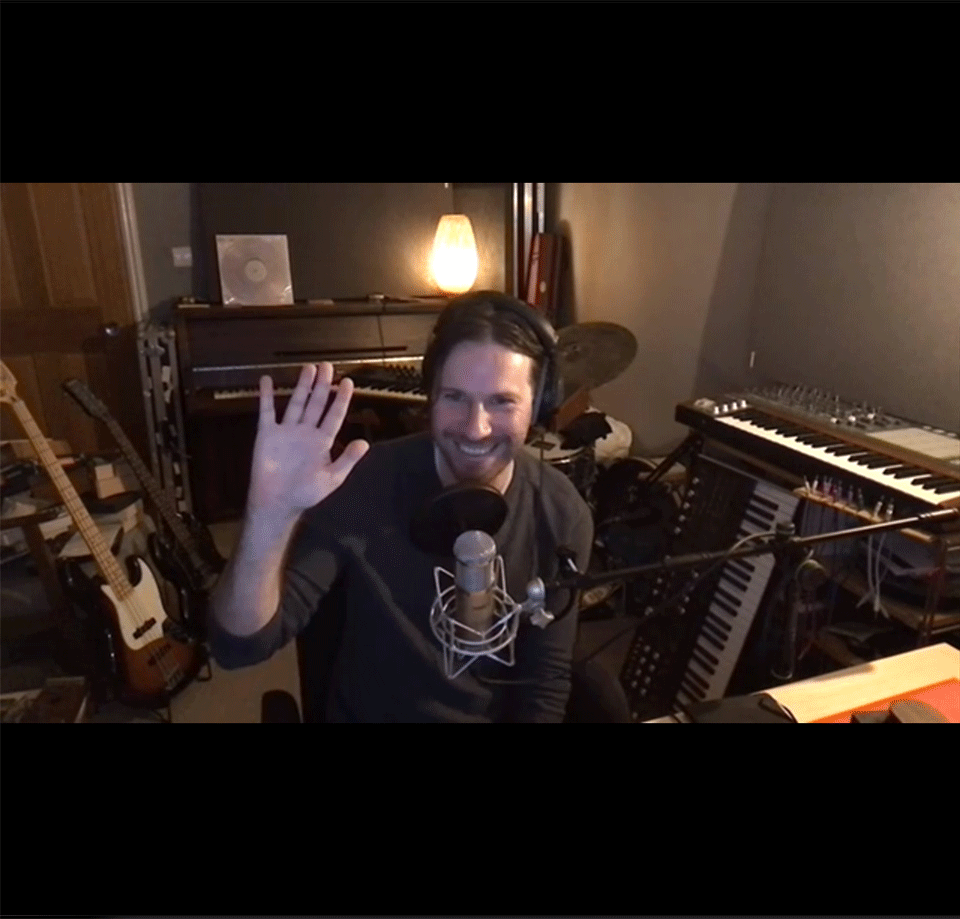
Ryan West: It’s a little similar to my background, without the technology-informed science side. Like most kids learning to play popular music, I played guitar, drums, and piano, and, after ten years of failing at that, I ended up making music on the computer, mainly to facilitate my writing as a guitarist. Over time, that clichéd thing happened where I started to think I could make music in the computer. One of the reasons I was so keen to have this conversation was because I was doing everything with plug-ins, but the first time I earned money I bought a Moog Voyager and a Prophet ‘08. That was the start of everything. I only made one song with the Voyager, but I made seven records with the Prophet. For some reason I connected with it; I found I could write very intuitively and explore ideas naturally. To this day, I still haven’t come across another synth that gives quite so much back to me.
D: I was actually involved with the very first professional soft synth back in 1995, which was Reality from Seer Systems. I used to say that I was the first person to make a soft synth, and the first person to stop. They’re great for exactly the reasons you said – they’re free or cheap and you get to stay in the box. Over the past 15 years I’ve seen how people start that way, but then the first time they get their hands on real hardware they think, “Okay, I get it now.” You’re a guitarist, so you know the difference between playing a real musical instrument and dragging menus on a computer. My epiphany was that I realized I was never playing with our soft synth and I had to ask myself why, because it had subtractive, FM, sampling, physical modelling, and it sounded reasonably good, but I realized it was all about look and feel. I started this company again in 2002, and it took a while for people to get used to hardware, but the whole analog thing, with real instruments, has exploded.
R: I guess you could never foresee the way they would come back. As technology changes, the idea is to create something different, which is probably a reassuring indication that it’s not only about people having an unquenchable thirst for something new.
D: I came out with the Evolver – which was my first hardware synth after 10 or 15 years – and, in the same year, Bob [Moog] came out with the Voyager. Neither took over the world, but people soon started realizing they could buy a 1980s analog synth for virtually nothing, and when it works it sounds really good. This might sound funny, but it took a while for people to get used to spending money on electronic musical instruments again. As you said, everybody expects technology to get better and cheaper every year, but here we were suddenly trying to sell $3,000 synthesizers. If you have one guitar that costs $1,000 and another that costs $5,000, people wonder what the difference is when they both have six strings and four knobs; but it’s all about the feel and the sound of the guitar. My goal is to get that same musical instrument personality into synthesizers. Even though they all have knobs and a keyboard, they all sound, act, and give different inspiration to different musicians.
There’s been two analogue revolutions – the ‘70s/early ‘80s and again in the early ‘00s. During that initial revolution, did you feel like you were entering a new frontier?
D: There were a couple of differences between the ‘70s, ‘80s, and the ‘00s. When I came out with the Prophet-5 it was a revolutionary product, because for the first time a keyboard player could play one sound polyphonically, hit a button, and play a completely different sound. Looking back, most of the musicians who bought the Prophet-5 were buying it not because it was a synthesizer, but because it was the best emulative sound they could get out of an instrument at the time. It was amazing to be able to go from strings to brass, or organ to bass, instantly, and that’s what most keyboard players wanted. But technology moved very quickly back then, and every six months it was completely different. Once the Yamaha DX7 came out, as well as the Korg M1 in 1987, that was the end of the first round of analog synths. The M1 was the first well-packaged sampler/rompler [A rompler plays back samples, but cannot capture samples. -ed.] that had real pianos, strings, and brass, but not enough people cared about the synthesis aspect. The next 20 years were what I call the digital dark ages, where everything built was a version of the M1. This time around people who play synthesizers are playing them because they’re synthesizers, and that’s a huge difference.
R: That reminds me of the notion that whenever a new technology emerges it’s always re-contextualised into what was known before. For example, they made early cinema function exactly like theatre before realising it had its own power and volition, so it’s interesting how it took so long for synthesizers to be explored for their own beauty and vocabulary. Obviously, you were exploring synthesis a long time ago, but surely it was more radical and shocking for people to hear it back then because it wasn’t a popularised sound like guitar, jazz, or orchestral music.
D: There was an earlier wave with the Prophet-5, Minimoog, and ARP’s Odyssey and 2600 where country players were using them, and I don’t think a lot of people realized how much synth they were hearing. Even in the ‘80s, you might hear a soundtrack and not know that the low, rumbling classic filter/resonance sweep sounds that created tension were done on a synth. But I’ve heard some of your new tracks, so how are using synths these days and what’s your creative process?
R: If I start with drums, as a lot of people do in electronic music, the composition can sound a little lazy, so I’ll start with synths and adopt a very harmonic/melodic point of view. By exploring different sorts of timbres, gestures, textures, and behaviours with synthesis, I end up creating more interesting compositions, so a lot of my music doesn’t need drums because of that. A lot of electronic music is context-based. For example, a certain type of techno music might work well in a club but not a small cafe, in the same way that modern art might need to exist in a large, white room and wouldn’t make sense in a small living room. I try to make my music function in both contexts.
D: None of this is easy to talk about in absolutes. There can be something about a particular sound that leads people into different directions musically, but the next person might go right by the same sound. A big part of the magic of synths is the inspiration aspect, which is why I love watching musicians play. I miss live music – it’s driving me crazy, and I sure hope that a year from now we’ll be making up for that.
When making these instruments, Dave, what aspects were the most difficult to overcome and how different was the manufacturing process?
D: Everything’s completely different to how it was 40 years ago. Back then we had our own factory and built everything ourselves. Now we have a contract manufacturer in San Francisco that buys all the parts and puts the instruments together. Sequential initially had 180 people; now we have 15. The process of designing the synth is hard to describe. We don’t build products that we think will sell well. For me, if we’re not having fun then we shouldn’t be building it. We try to be unique, but the biggest thing is the personality of the instrument. We’ll kind of know how it should sound, but it’s not a musical instrument until we build it. There’s a lot of software and hardware that all has to be debugged and tweaked, but there’s always this magical point in the process where I hit a key and get sound for the very first time. It might be glitchy and most of the features don’t work yet, but it’s so much fun to hear it and think, “Oh, wow. This is going to be pretty cool.” It’s a very iterative process, but we’ve all been doing it a long time, and everyone who works at the company is a synth nut who has ideas. It’s awesome to start with nothing and end up with a brand new instrument that didn’t exist before.
R: My process is similar, in that I’m acknowledging people but not going out of my way to create something that I think person X will like – no good art is born that way. At the same time, when art is at its best it’s a conversation rather than a monologue. Obviously, you hope there’s engagement and communication, but my practice is built around huge amounts of improvisation and experimentation, with no emphasis on anything becoming a song let alone a record.
D: There are a lot of parallels between the art of building a musical instrument like a synthesizer and the art of building a song. I have no idea what other products do, because – connected to what you just said – the first time we start trying to match features that somebody else is doing is the moment we’re copying and not leading. The other aspect is that I’m a big fan of constrained instrument designs. One of the hardest things to do when designing an instrument is to know when to stop, because it’s all technology-based and we can always add another great feature, but at some point you’re adding too much and the instrument loses focus. That’s not different to writing a song – you can keep adding a gazillion tracks on your computer, but the hardest part of recording a song sometimes is about knowing what to leave out.
R: A lot of my most inspiring moments are exactly that – those very quick and spontaneous sketches that have been about less rather than more. There’s no recipe, but most people hope to have those moments come around now and again where new music comes together very naturally that seems to click. That’s why I don’t force anything to “become something,” even if I like what I’m working on.
Ryan, what do you think it is about the Prophet ‘08 that gives it longevity?
R: Even though the Prophet has a very identifiable sound, I feel I can immediately start to make it personalised. With an instrument like the Moog Voyager, I never feel like I’m hearing the artist’s sonic signature. The Prophet also has the ability to do thin, delicate sounds amazingly well. A lot of people get seduced by these big bombastic sounds because there’s a power to them. It’s like Hollywood in a way; it’s big and massive but leaves a short impression on people. In my process I layer lots of thin sounds to create a collage, which Dave wouldn’t have perhaps envisioned when he made it – or maybe you did?
D: It’s funny, because all of our instruments will come with X amount of sounds, and we have to make a variety, but you’re right that you want the first few sounds to be bombastic so if some guy walks up to a music store or trade show they’ll find a sound that blows them away. We realize that nobody is ever going to use that sound in a mix, but I wouldn’t call the sounds thin, necessarily; they’re simpler and cleaner sounds. The horror for most synth designers is for someone to call their synths “thin.”
R: I understand that saying “thin” has a negative connotation, but if you listen to great music there’s lots of attention to different thicknesses of texture and layer. In classical music a violin part can be thin compared to the weight of eight double basses playing simultaneously, but I’m interested in composing and acknowledging the different weighting of sounds. I often get asked by fans how I create certain sounds, and I think they overlook simplicity, because people who have just got into electronic music often feel they need to make everything sound compressed, distorted, or huge. Whereas if you explore the spectrum, you might find that the thing you overlooked was more important and personal to you. I think the Prophet ‘08 lends itself really well to layering, and I’m sure that’s true of all the Prophets. Every single timbre is different, and it’s beautiful how they weave in and out of each other. Maybe we should talk about the Prophet-5 that’s coming out? I was super excited to see that was being reissued.
D: I always said I’d never do it. People had been asking for 40 years, and I kept saying I wanted to do something new, but about a year ago I started thinking about it a little more. The key was when we realized that there were some new parts coming out that allowed us to add both filters from the original versions in the same unit and switch between them. Then we added the Vintage knob, which is even more extreme because you can go through all four vintages. We didn’t know what it was going to do until we implemented it because it’s all controlled by the software, but once we did that the whole machine came alive. On the Rev 1 and 2 [versions of the original Prophet-5] we used one filter and the envelopes were all over the place. That meant you wouldn’t have a consistent release or attack time and every note would be different, but when you play polyphonically, especially pads, that can sound really good. The Rev 3 filter was much more stable, so we implemented that in the new one with the Vintage knob. So, as you turn it, the tuning, filters, and envelopes get a little sloppier, and you get all these independent sweeps that, collectively, sound massive.
It’s interesting that you’re trying to build that character back into the machines. Artists often say that one Minimoog, for example, sounds different to the next…
D: When I was developing the new Prophet-5, at some point we had five old ones in the office at the same time and we found that they were all different, like you were saying about the Minimoogs – even though they were computer controlled. I soon realized I couldn’t simply copy or use my Rev 3 as a reference; I had to use all of them. Put it this way, there is no definitive Prophet-5 because they were all over the place. The new ones are going to be exactly the same, but you can make them sound sloppy to get however much of that individuality you want – and you can save [the settings] when you’re done. [laughs] We think that’s the best of both worlds.
R: Has the lifespan of the circuitry and all the electronics involved in those synthesizers lasted much longer than people imagined?
D: Well here we are with 40-year-old electronic products that are still working. The biggest problem is that a lot of the parts aren’t made anymore, so if part X pops you can’t buy a new one. Repair places will buy broken Prophet-5s or Minimoogs, cannibalize them, and use the parts for other Prophet-5s. Looking 40 years into the future, it’ll be the same thing – you won’t be able to get the DSPs and microprocessors. But people don’t realize that even on a 100% analog signal path-product like this, there’s a ton of magic in the software to make it work as it should. The hardware is one part, but the software’s always the last thing that gets done because it’s so complex and has so many layers to it. If you compare the technologies, [the original Prophet-5] had an 8-bit processor running at 2.5 MHz, and the new Prophet-5 has a 500 MHz ARM [Advanced RISC Machines] processor and a 500 MHz DSP chip. The original had 50 or 60 trimmers inside that you had to tweak perfectly to get everything to work, but there are no trimmers in the new one because the processors tweak everything. We use the technology to make it more reliable and work better – or work “worse,” if we want them to! 